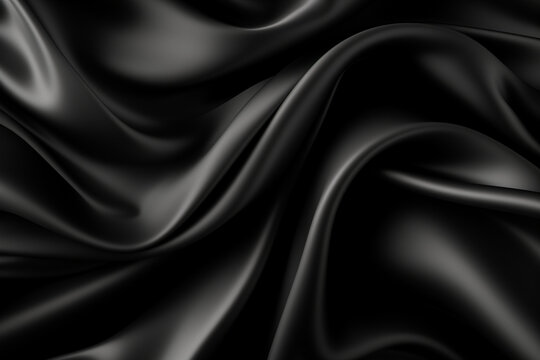The Enduring Allure of Black Satin Fabric in the Fashion Industry

In a world where trends change by the season, some materials remain timeless. Among these, few fabrics hold the same universal appeal and elegance as satin—particularly in its deepest, most iconic hue: black. For decades, this sleek textile has represented everything from mystery to sophistication, consistently finding its place on red carpets, runways, and within ready-to-wear collections. The fashion industry’s enduring love affair with this fabric speaks volumes about its versatility, cultural significance, and undeniable charm.
The Classic Appeal of Satin in Black
Satin has always been synonymous with luxury. Its smooth surface, high sheen, and graceful drape make it ideal for garments meant to stand out. When rendered in black, it takes on a whole new level of depth and glamour. The interplay of light on a black satin surface creates a unique luster that catches the eye without overwhelming the senses.
In formalwear, this combination has become the go-to standard. From sultry gowns to tailored tuxedo lapels, black satin exudes a kind of effortless elegance that transcends seasons and silhouettes. It enhances a garment’s structure while softening its appearance, making it a favorite for designers who aim to balance power with grace.
A Staple in Evening and Occasion Wear
Evening fashion is perhaps where this textile shines brightest. For decades, black satin has been a preferred material for cocktail dresses, bridal party gowns, and gala attire. Designers like Christian Dior, Alexander McQueen, and Stella McCartney have all featured black satin creations in their couture and ready-to-wear lines, proving its continued relevance.
Whether it’s a figure-hugging mermaid dress or a voluminous A-line gown, the fabric’s rich sheen elevates the entire look. In particular, the smooth finish of satin in black makes it a flattering option for all body types and skin tones. Its ability to reflect just the right amount of light adds dimension, making it a showstopper on runways and in real-life events alike.
Versatility in Design and Texture
One of the key reasons satin remains a fashion favorite is its adaptability. It can be used for everything from structured corsetry to fluid drapery, depending on how it’s cut and finished. When dyed black, it carries an added element of mystery and drama, allowing designers to play with shape, shadow, and silhouette.
Modern fashion has seen a revival of minimalist aesthetics, and black satin fits seamlessly into this trend. Whether used for a bias-cut slip dress or a sleek button-up blouse, the material offers high-impact elegance without the need for excessive detailing. Even in street style, black satin finds relevance—think relaxed-fit satin pants or oversized blazers paired with statement accessories.
Cultural and Historical Significance
Throughout history, satin has been associated with status and wealth. Originally crafted from silk and reserved for royalty, it eventually became more accessible with the advent of synthetic blends. Still, its luxurious connotations remain intact. When worn in black, it often symbolizes power, elegance, and subtle rebellion.
Hollywood has played a significant role in embedding this fabric into popular consciousness. Think of Audrey Hepburn’s iconic black satin dress in “Breakfast at Tiffany’s” or the countless satin gowns worn on Oscar nights. These moments have cemented the material’s place as a symbol of timeless style and prestige.
Sustainability and the Modern Fabric Market
As the fashion industry shifts toward sustainability, satin—especially in black—continues to evolve. Today, eco-conscious brands are producing satin from recycled polyester, bamboo fibers, or plant-based alternatives that mimic the classic sheen and texture of traditional satin. These innovations allow designers to embrace timeless aesthetics while reducing environmental impact.
Black, as a color, also contributes to longevity in fashion. Unlike trend-driven prints or seasonal palettes, a well-made garment in black satin fabric remains stylish year after year. This durability aligns with the values of slow fashion, where quality, versatility, and timelessness are prioritized over disposable style.
A Designer’s Favorite for a Reason
Ask any fashion designer what materials they consistently return to, and satin—particularly in black—is likely to make the list. It photographs beautifully, moves fluidly, and adds instant luxury to any design. Whether used in eveningwear, accessories, or lingerie, it provides a foundation for creativity and elegance.
Moreover, the fabric complements embellishments like lace, sequins, and embroidery, while also standing strong on its own. In short, it’s both a canvas and a masterpiece—able to anchor a look or steal the show, depending on how it’s styled.
Conclusion
While many fabrics rise and fall in popularity, some transcend time and trend. Black satin fabric has carved out such a position in the fashion world, admired for its beauty, versatility, and sophistication. From classic Hollywood glamour to today’s minimalist runways, this luxurious textile continues to inspire designers and captivate audiences. Its enduring presence in high fashion is a testament to its power—a power that lies not in loud patterns or fleeting trends, but in quiet, polished confidence.





